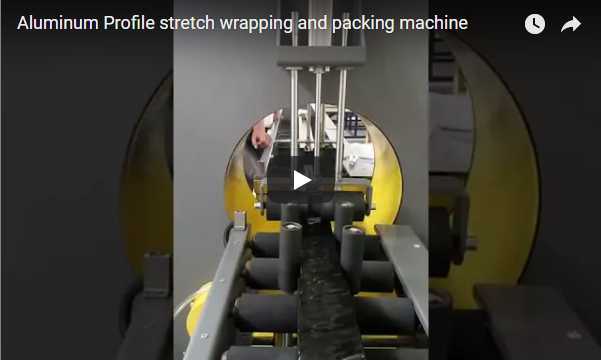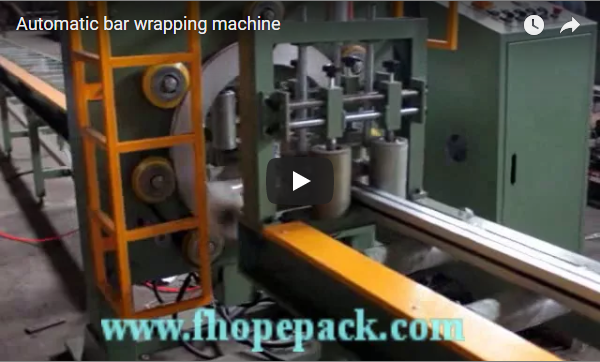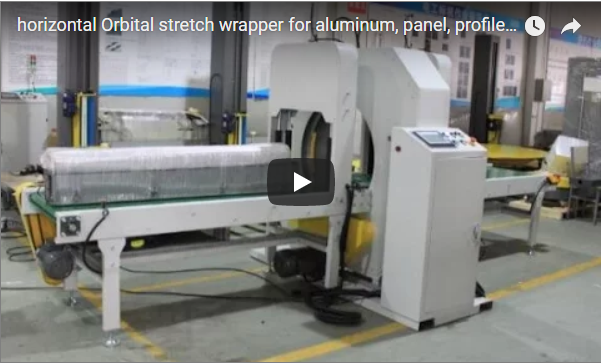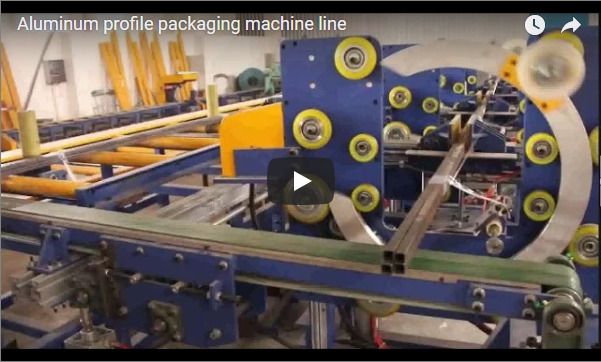Automated Packaging Solutions for Protecting Aluminum Extrusions
Aluminum extrusions, valued for their versatility and aesthetic appeal, are inherently susceptible to surface damage during handling, storage, and transportation. Scratches, dents, and abrasion can compromise the finish quality, leading to costly rework, scrap, or customer rejection. Implementing effective packaging solutions is therefore not just a final step, but a critical part of the manufacturing and supply chain process. Automated packaging systems offer efficiency, consistency, and superior protection compared to manual methods.
The following video demonstrates an automated packaging process designed specifically for aluminum profiles:
Understanding the primary automated technologies available helps in selecting the most appropriate method for specific extrusion types and operational needs.
1. Stretch Wrapping for Extrusion Bundles
Orbital stretch wrapping is a widely adopted method for securing bundles of aluminum extrusions.
- Process: The machine features a rotating ring carrying a roll of stretch film. The bundle passes horizontally through the ring, which dispenses the film and wraps it tightly around the profile bundle.
- Technical Aspects:
- Film Pre-stretch: Modern systems typically pre-stretch the film (up to 300% or more), reducing film consumption and improving load containment force.
- Tension Control: Precise tension control is crucial to avoid damaging delicate profiles while ensuring bundle integrity.
- Overlap Adjustment: Variable overlap settings allow for tailored protection levels, from basic bundling to full encapsulation against dust and moisture.
- Benefits: Cost-effective material usage, good protection against abrasion and environmental factors, suitable for various bundle lengths and shapes.
- Typical Applications: Bundled mill-finish or painted extrusions, window profiles, structural aluminum shapes.
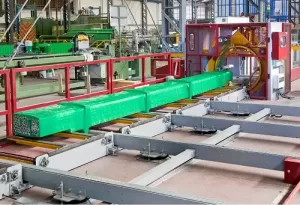
aluminum profile packaging lines 300x205 2. Shrink Wrapping for Enhanced Protection
Shrink wrapping provides a conformal, often sealed, protective layer around extrusions or bundles.
- Process: Profiles are typically sleeved or covered with a shrink film (often polyethylene - PE). The package then passes through a heat tunnel where the film shrinks tightly around the product.
- Technical Aspects:
- Film Type & Gauge: Selection depends on the required toughness, clarity, and shrink properties. Low-Density Polyethylene (LDPE) is common.
- Seal Integrity: Consistent, strong seals (side seal or overlap seal) are vital for fully enclosed packages.
- Heat Tunnel Control: Precise temperature and airflow control within the tunnel ensures even shrinkage without overheating or damaging the extrusion surface or finish.
- Benefits: Excellent protection against dirt, moisture, and minor impacts; clear film allows product visibility; tamper evidence.
- Considerations: Requires careful temperature management, especially for heat-sensitive coatings or finishes. Higher energy consumption compared to stretch wrapping.
3. Strapping for Bundle Stability
Strapping is primarily used to secure bundles firmly, often in conjunction with wrapping for added stability, especially for heavier or larger bundles.
- Process: Plastic (Polypropylene - PP or Polyester - PET) or sometimes steel straps are fed around the bundle, tensioned, and sealed (typically via heat weld or friction weld for plastic).
- Technical Aspects:
- Tensioning: Must be sufficient to secure the load but not so high as to crush or damage the profiles. Edge protectors are often necessary.
- Seal Efficiency: The strength and reliability of the strap joint are critical for load security.
- Strap Type: PET offers higher strength and retained tension compared to PP, making it suitable for heavier loads.
- Benefits: High tensile strength for secure bundling, relatively low material cost per application, facilitates easier handling of heavy bundles.
- Usage Context: Often used as a primary method for robust, less cosmetically sensitive profiles or as a secondary reinforcement over stretch or shrink-wrapped bundles.
4. Integrated Packaging Lines
For higher throughput operations, individual machines are often integrated into automated packaging lines. This can include:
- Conveyor Systems: Transporting bundles between processes (e.g., from stacking to wrapping to strapping).
- Stacking/Bundling Units: Automated assembly of extrusions into correctly sized bundles before packaging.
- Infeed/Outfeed Automation: Automatically feeding bundles into the packaging machine and discharging them afterwards.
- Labelling/Marking: Integration of printing or labelling systems post-packaging.
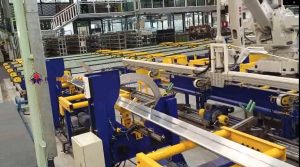
automatic aluminum profile bundling packaging line Key Considerations When Selecting Aluminum Extrusion Packaging Equipment
Choosing the right system requires careful evaluation of several factors:
- Profile Characteristics: Consider dimensions (length, width, height variability), complexity of shapes, and crucially, the surface finish sensitivity (mill finish, anodized, painted, powder-coated).
- Required Throughput: Match machine speed (bundles per hour/shift) to production output.
- Level of Protection Needed: Determine the primary risks – abrasion, moisture, impact, long-term storage needs.
- Bundle Configuration: How are profiles typically bundled? Are spacers or interleaving materials required?
- Operational Environment: Consider available floorspace, integration with existing material handling, and power/air requirements.
- Budget and ROI: Evaluate initial investment against long-term savings from reduced damage, labour, and material costs.
Operational Best Practices
- Preventive Maintenance: Regular cleaning, lubrication, and inspection of wear parts (cutters, sealing elements, drive belts) are essential for reliable operation.
- Calibration: Ensure correct settings for film tension, strap tension, and heat tunnel temperature for consistent results.
- Material Quality: Use high-quality stretch film, shrink film, and strapping appropriate for the machine and application. Inconsistent materials can cause jams or poor package quality.
- Operator Training: Properly trained operators are crucial for efficient machine operation, troubleshooting minor issues, and ensuring safety protocols are followed.
Conclusion
Automated packaging systems are indispensable tools for manufacturers and distributors of aluminum extrusions. Whether employing stretch wrapping, shrink wrapping, strapping, or an integrated combination, these technologies provide consistent, reliable protection that safeguards product quality from the end of the production line to the final customer. By carefully considering the specific needs of the profiles and the operation, fabricators can select and implement packaging solutions that reduce waste, enhance efficiency, and maintain the value of their aluminum products.
For more information on specific aluminum extrusion packaging applications:
https://www.fhopepack.com/Aluminum/
For specific application inquiries or technical details, contact info@fhopepack.com


